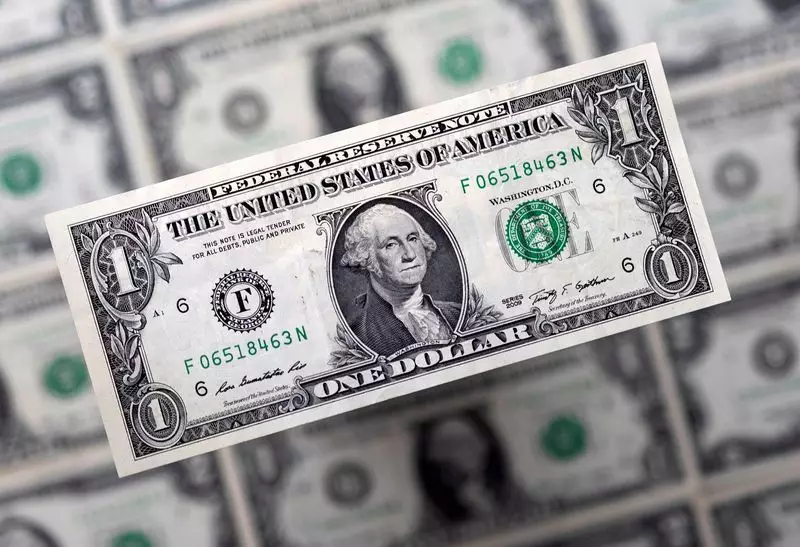In recent trading sessions, the U.S. dollar has ascended to a notable peak against other prominent currencies, marking a one-year high that has stirred considerable discussion among economists and investors alike. This surge, driven predominantly by the implications of political changes in the United States and the behaviours in global financial markets, illustrates a complex interplay of economic principles, geopolitical factors, and market psychology. Concurrently, the cryptocurrency Bitcoin has also captured market attention by reaching eye-popping heights, suggesting a volatile yet promising future for digital assets.
Much of the dollar’s strength can be attributed to the momentum generated by Donald Trump’s administration and its perceived economic policies. With a Republican-controlled Congress expected to embrace fiscal strategies that may heighten spending and implement higher tariffs, analysts suggest that inflation could increase, potentially reshaping how the Federal Reserve manages interest rates. Such policy decisions lead to an environment where the dollar may prosper, as they pave the way for higher Treasury yields.
Chris Weston, the head of research at Pepperstone, aptly summed up the dollar’s position: it is a “magical currency” buoyed by several factors, including current market dynamics and anticipated fiscal measures. Such insights reveal that as long as the U.S. economy maintains its growth trajectory, the strength of the dollar is likely to persist, affecting foreign exchange relationships and providing traders with ample opportunities.
The relationship between inflation, economic growth, and interest rates remains central to understanding the dollar’s recent performance. With expectations of a lower rate environment becoming a prominent discussion among investors, the Fed’s potential decision to keep rates lower for longer may contradict its objective of maintaining economic stability. Recent consumer inflation metrics align with economist predictions, suggesting that the Fed will likely proceed with reductions in rates during its upcoming meetings. However, this has not deterred the dollar’s upward trajectory, a sign that market participants are more optimistic about immediate economic conditions than long-term forecasts.
What we observe is a balancing act between short-term bullishness regarding the dollar and concerns about inflation’s impact on monetary policy. These dynamics are crucial for traders to assess, as a shift in consumer behaviour or unexpected economic data release can catalyze significant marketplace volatility.
While traditional currencies experience fluctuations largely influenced by fiscal policies and geopolitical events, the cryptocurrency sphere offers a markedly different narrative. Bitcoin recently soared to an unprecedented high, boldly crossing the $93,000 mark. This meteoric rise is further evidence of a growing acceptance of digital currencies as viable alternative investments, a trend eagerly encouraged by statements from political figures who envision the U.S. as a “crypto capital.”
The surge in Bitcoin’s valuation highlights a rapid shift in both institutional and retail investor sentiment towards cryptocurrencies. It illustrates a growing confidence in these digital assets as hedges against inflation and traditional financial market instability. Investors are increasingly viewing Bitcoin less as a speculative asset and more as part of a larger investment strategy aimed at securing wealth amidst uncertain economic conditions.
The interconnectedness of global markets means that shifts in U.S. monetary policy have far-reaching consequences. As the dollar strengthens, other currencies such as the euro and the British pound often suffer. A stronger dollar makes U.S. exports more expensive and can potentially hurt American manufacturers, as their products become less competitive abroad. Conversely, a weakening pound may provide a boost to U.K. exports.
Investors globally must closely monitor these shifts within the U.S. economy and their ripple effects across different sectors. The Australian dollar, for instance, is lingering near recent lows due to less-than-stellar jobs data, which paints a picture of an economy grappling with varying degrees of recovery. The interdependencies between economies underscore the importance of understanding regional responses to U.S. fiscal strategies while considering individual national economic conditions.
In sum, the simultaneous rise of the U.S. dollar and cryptocurrencies like Bitcoin underscores an evolving financial landscape. Traders and investors must navigate this complexity, understanding the influences of political developments, economic indicators, and market sentiment. As the U.S. approaches a new administration and grapples with pressing monetary policy decisions, those engaged in currency trading will need to adapt quickly to these dynamic conditions while leveraging opportunities in both traditional and digital assets. How these markets unfold may reshape investment strategies in the months and years to come, prompting a reevaluation of asset values in a rapidly changing economic environment.

